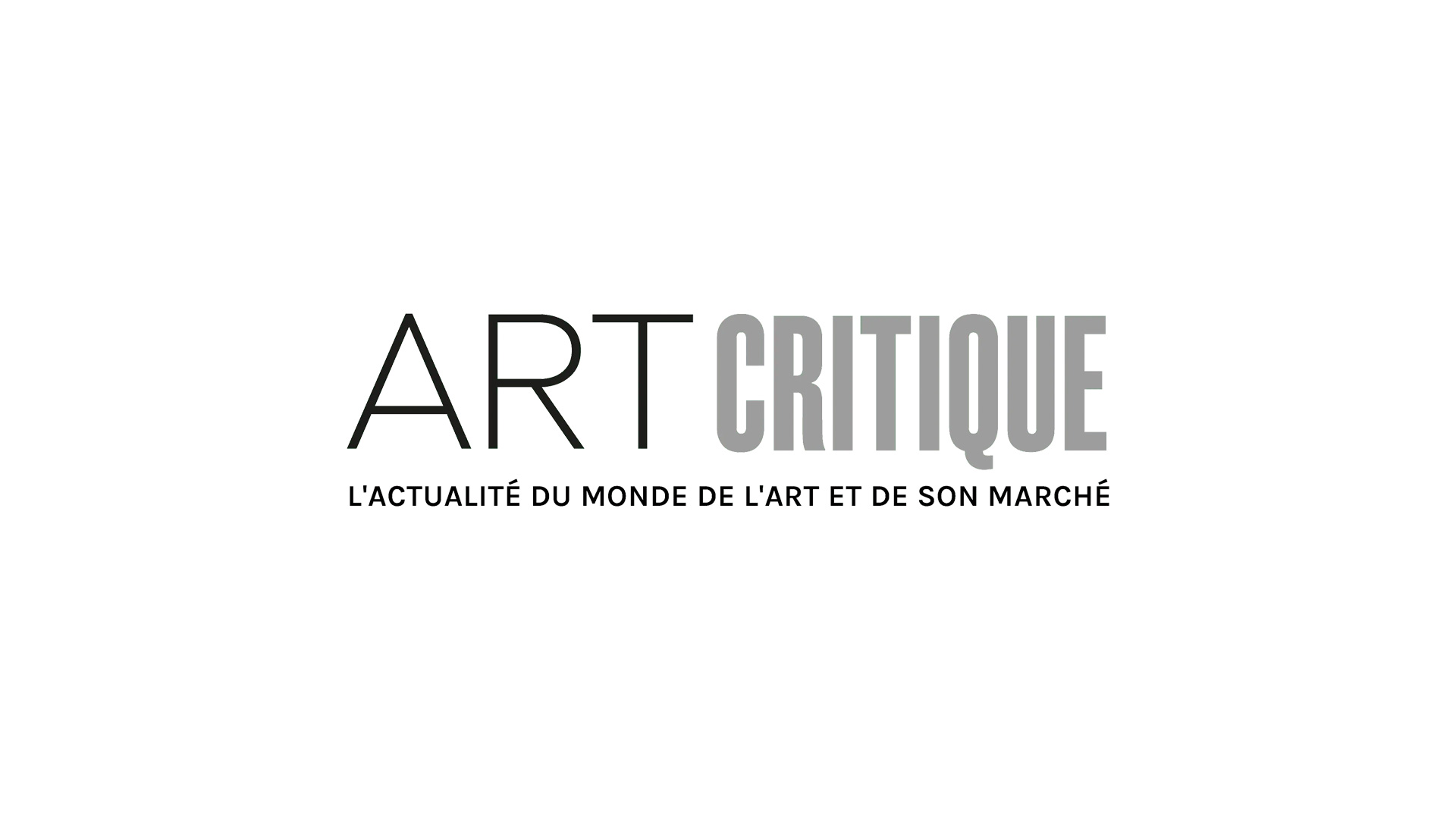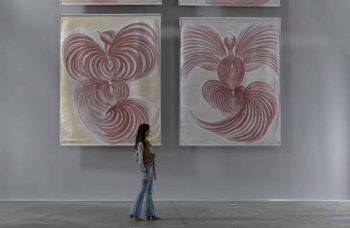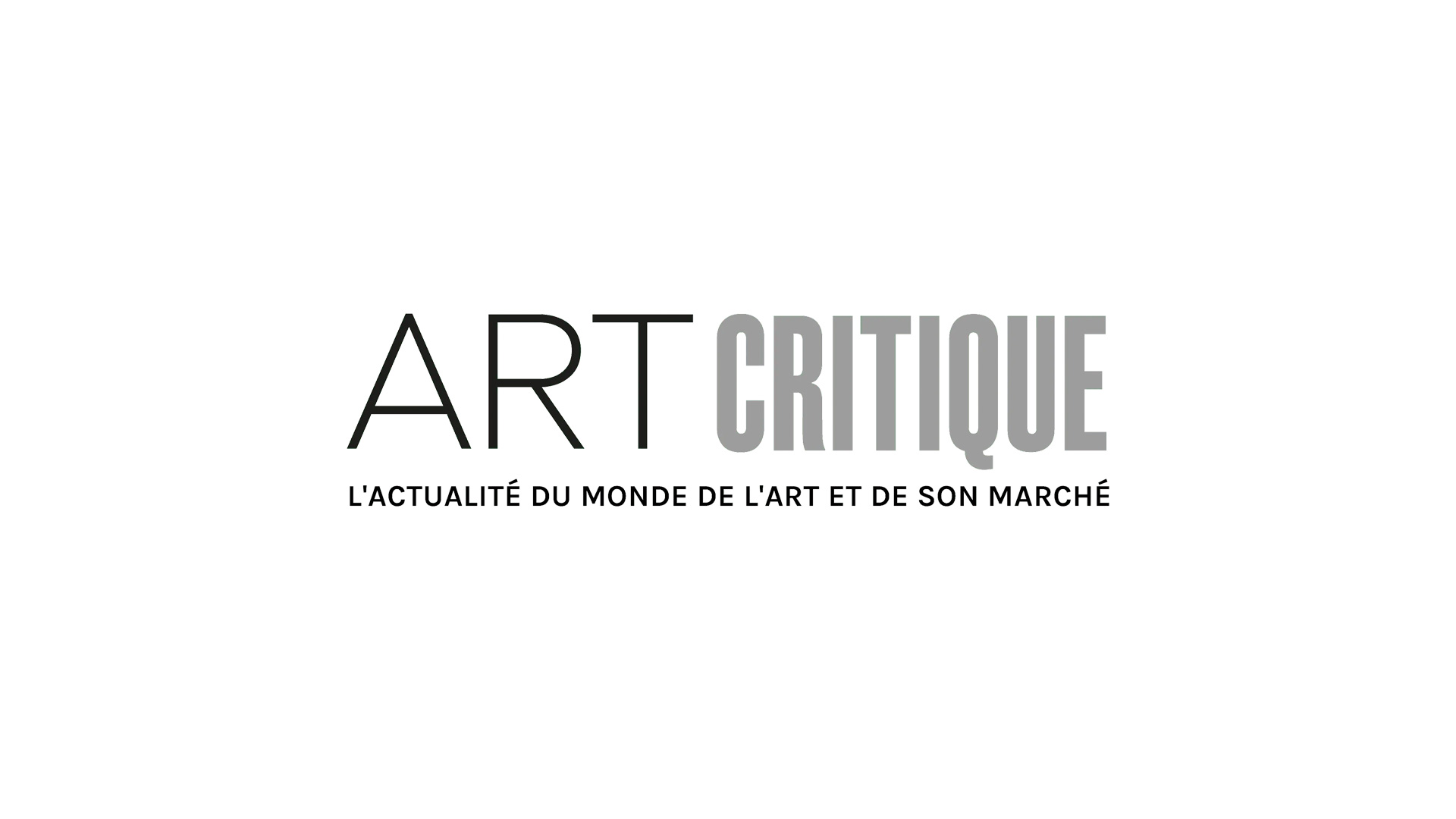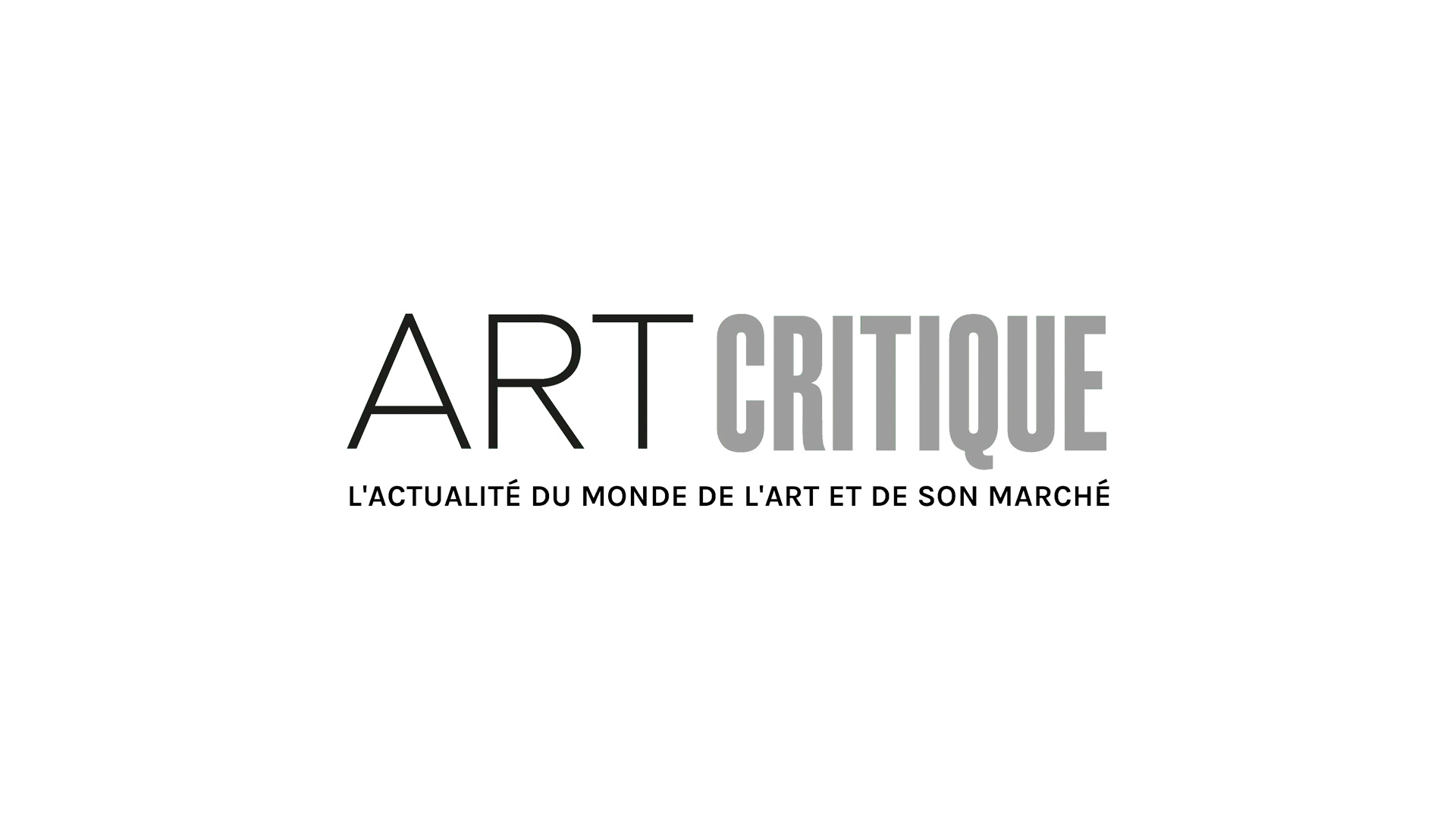In this week’s Art World Roundup, we cover the US National Gallery of Art’s first acquisition of art by a Native American artist and how one London MP is honouring an artist and victim of Grenfell. The UK government pledges to help out the culture sector while the LACMA quietly restitutes works to South Korea. Another milestone occurs in the Bouvier-Rybolovlev affair and a lawsuit could spell disaster for King Tut’s international tour.
National Gallery acquires first work by Native American artist
A large 1992 work by Jaune Quick-to-See Smith called I See Red: Target has become the National Gallery of Art in Washington DC’s first acquisition of a work by a Native American artist. The work was created by Smith for the 500th anniversary of when Christopher Columbus set foot on North American soil. Measuring in at 11 feet tall, the work is monumental in size, and resembles works by Jasper Johns and Andy Warhol. According to Smith, I See Red: Target was a comment on “Native Americans being used as commodities.” The US museum purchased the work with funds given by collectors Emily and Mitchell Rales and is the first work by a Native American artist to enter the collection since the museum opened in 1941.

UK government finally looks to the cultural sector during lockdown woes
After museums and galleries have been closed for months and creatives called for intervention, the UK government has now promised a £1.57 billion support package for struggling members of the cultural sector. While museums and galleries were given permission to begin reopening on July 4th, many are still struggling to make ends meet and theatres, music venues, and others still have no real guidance as to when they will be allowed to reopen safely. No venue has been safe as lockdown measures have remained in place to slow the spread of COVID-19 and even some of the UK’s most renowned institutions, like Royal Albert Hall, are on the brink of financial ruin. Of the funds, £270 million will be in the form of repayable loans with another £880 million being distributed as grants. Meanwhile, £100 million is earmarked for national cultural institutions and sites that are part of the English Heritage Trust. The announcement comes after creatives penned an open letter to the UK government in April urging them to act before the UK became a “cultural wasteland.” It also follows a report that found that the creative sector could see as much as a £74 billion drop in revenue this year.
An artist killed in Grenfell remembered on the streets of Notting Hill
Just over three years ago, a fire engulfed Grenfell Tower, a derelict block of flats in London, and devastated families and the area. Hundreds of people were injured and over 70 people were killed in the tragedy including British-Gambian artist Khadija Saye. Now, Saye’s short life – she was only 24 when she died – and her works are being honoured through an exhibition called “In This Space We Breathe,” which aims to highlight the lack of diversity in the UK arts sector. Nine poster-sized prints of Saye’s works now line the streets of Notting Hill as part of the exhibition which is part of a larger initiative called “Breath is Invisible.” The initiative, which was spearheaded by David Lammy, Tottenham’s Labour MP and a friend of Saye’s, is included in the Khadija Saye IntoArts Programme that seeks to develop the arts in disadvantaged communities. “Breath is Invisible” will boast commissioned works Martyn War, Zachary Eastwood-Bloom, and Joy Gregory in future instalments. “This exhibition reminds us of the dignity and humanity with which we remember those who lost their lives,” said Lammy of the exhibition. According to him, Saye’s works “reflect that deep sensibility that was part of her personality.” Her works were included in the 2017 Venice Biennale’s Diaspora Pavilion. She was the youngest participating artist that year and six of the works that were included in the Biennale are some of the only surviving works by Saye as much of her oeuvre was destroyed in the fire.
LACMA returns four Buddhist paintings stolen during the Korean War
In the early 1950s, four Buddhist paintings were taken from a temple in South Korea and brought to the US during the Korean War. Last week, the paintings, which were held in the Los Angeles County Museum of Art’s collection, were quietly restituted. Including one painting of Shakyamuni Buddha and three Siwangdo, or narrative paintings, depicting the Kings of Hell, the works were commissioned in the 18th century for the Singeung Temple on Mount Seorak in Sokcho, Gangwon Province. In 2015, the LACMA was contacted by the Jogye Order of Korean Buddhism with the concern that a number of works, including the four paintings, were in fact looted from Buddhist temples. Upon investigation, which included researching pictures taken by the US army throughout the Korean War, it was determined that the works were in fact stolen. They’d remained missing until a woman found them in her son’s attic in 1998. Stephen Little and Virginia Moon, part of the LACMA’s Korean art department, and Michael Govan, director of the museum, worked alongside the Jogye Order to secure the restitution. In August, the works will be reinstalled at Sinheungsa in Gangwon Province.

Another notch in the Bouvier-Rybolovlev legal battle
On Wednesday, the Monaco Court of Revision upheld a lower court’s December 2019 ruling to dismiss charges of fraud and money laundering brought against Yves Bouvier, a Swiss art dealer who has been entrenched in a lengthy legal battle with Dmitry Rybolovlev, a Russian billionaire and art collector. In its decision last year to throw out the case against Bouvier, the Monaco Court of Appeal found that “all investigations were conducted in a biased and unfair way without the defendant being in a position to retrospectively redress these serious anomalies that permanently compromised the balance of rights of the parties.”
Bouvier cheered the court ruling, saying “For the last five years, I have been claiming my innocence, and today I have been vindicated by the Monaco courts”. Rybolovlev’s lawyers, meanwhile, argued that “this outcome has come about for purely procedural reasons and not because of an absence of evidence against Yves Bouvier”.
Though the ruling has ended the criminal procedures in Monaco against Bouvier, the longstanding legal battle is set to continue in Geneva, where Bouvier faces a separate investigation over charges of defrauding Rybolovlev out of $1 billion. As Art Critique has previously reported, Rybolovlev and his lawyers have alleged that Bouvier was mandated by the Rybolovlev family’s companies to arrange for the acquisition of 38 artworks.
Bouvier has repeatedly denied the allegations of fraud and has insisted that he was an independent seller free to set his own prices. Regarding Rybolovlev’s accusations that Bouvier made him believe that he was negotiating the best price with the owners of the works while instead negotiating to maximize his own profits, Bouvier has argued that he was engaged in “a commercial game”. He recently told the New York Times in an interview that he did in fact feign negotiations with sellers even though he already owned the artworks, but maintains that this was a legitimate business tactic to ensure that Rybolovlev paid swiftly.
Does a major King Tut exhibition violate Egyptian law?
An Egyptian lawyer, Sayed Said, has filed a lawsuit against the Egyptian Ministry of Antiquities in relation to “Tutankhamun: Treasures of the Golden Pharaoh,” an international blockbuster exhibition of more than 130 artefacts. Having just opened on its London leg of the tour in March, the exhibition was paused due to the COVID-19 pandemic. It was meant to run through May 3rd at London’s Saatchi Gallery but it has been postponed, along with the rest of the tour, until lockdown restrictions ease. Said argues that the 2017 contract between the Ministry of Antiquities and IMG, the parent company of Exhibitions International who organised the show, many have violated antiquities laws. At the time of the agreement, the law stated that objects could be loaned through an exchange with certain places like “museums, scientific institutions or states,” not commercial bodies, given that the objects were not unique. The law was slightly relaxed in 2018 amendment but the contract was signed prior to that change. Said believes the show violates the law because the contract is an agreement with a private company, not a public body. Additionally, the unique nature of the items included is of concern. According to the BBC, who reported on the matter, IMG claimed the artefacts in the exhibition were not unique. Controversial Egyptologist Zahi Hawass, who played a large role in the development of the exhibition, is quoted as claiming “these touring artifacts aren’t of any importance.” However, this directly contradicts a quote from him used to promote the exhibition in which he said “each object is unique.” If the lawsuit is successful, it has asked that all of the objects be returned to Egypt, voiding the rest of the tour. If the tour continues, the artefacts will continue to be shown around the world until 2024, when they will return to Egypt to be installed at the Grand Egyptian Museum set to open next year.






